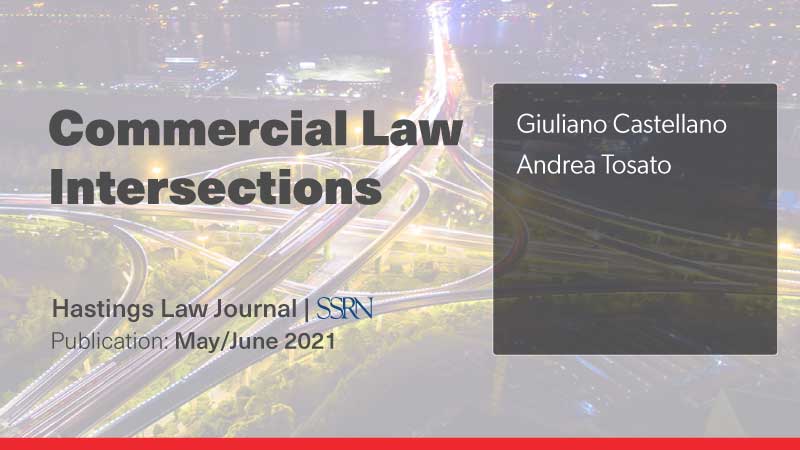Commercial Law Intersections

Giuliano Castellano and Andrea Tosato, Commercial Law Intersections, 72 Hastings Law Journal (2021) and U of Penn, Inst for Law & Econ Research Paper No. 20-31

Commercial law is not a single, monolithic entity. It has grown into a dense thicket of subject-specific branches that govern a broad range of transactions and corporate actions. When one of such dealings or activities falls concurrently within the purview of two or more of these commercial law branches—such as corporate law, intellectual property law, secured transactions law, conduct and prudential regulation—an overlap materializes. We refer to this legal phenomenon as a commercial law intersection (CLI).
CLIs are ubiquitous. Notable examples include traditional commercial transactions, such as bank loans secured by shares, supply chain financing, or patent cross-licensing agreements, as well as nascent FinTech arrangements, such as blockchain-based initial coin offerings and other dealings in digital tokens.
CLIs present a multi-faceted challenge. The unharmonious convergence of commercial law branches generates failures in coordination that both increase transaction costs and distort incentives for market participants. Crucially, in the most severe cases, this affliction deters business actors from entering into the affected transactions altogether. The cries of scholars, judges, and practitioners lamenting these issues have grown ever louder; yet methodical, comprehensive solutions remain elusive.
This Article endeavors to fill this void. First, it provides a comprehensive analysis of CLIs and the dynamics that give rise to coordination failures. Drawing from systems theory and jurisprudence, it then identifies the deficiencies of the most common approaches used to reconcile tensions between commercial law branches, before advancing the concepts of “legal coherence” and “unity of purpose” as the key to addressing such shortcomings. Finally, leveraging these insights, it formulates a normative blueprint, comprising a two-step method which aims to assist lawmakers, regulators, and courts in untangling the Gordian knot created by CLI coordination failures.



